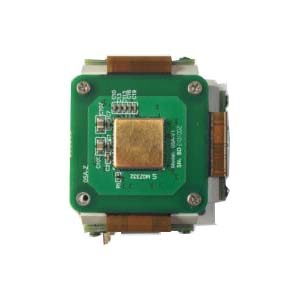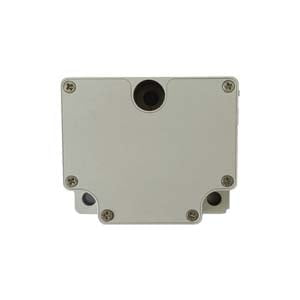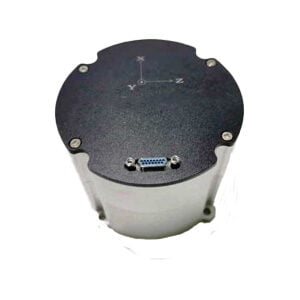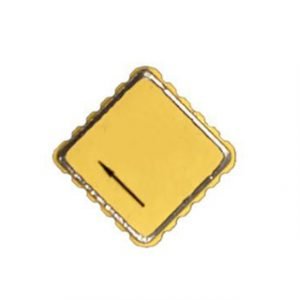There are two optimization algorithms for the attitude calculation of unmanned aircraft, one is IMU, and the other is AHRS, which is widely used by various unmanned aircraft.
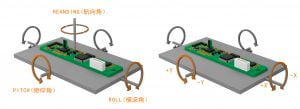
AHRS refers to the heading and attitude reference system software. AHRS is composed of an acceleration sensor, an electromagnetic field meter, and a gyroscope. It can display the forward direction (yaw), roll (roll) and pitch (pitch) information content for the quadcopter. This kind of system software is used in order to provide accurate and reliable status and sailing information content for the quadcopter. The real reference of AHRS comes from the gravitational field on the earth and the electromagnetic field of the universe. The final precision of its static data lies in the measurement accuracy of the electromagnetic field and the measurement accuracy of the acting force, while the gyroscope determines its dynamic characteristics. It shows that the AHRS cannot operate normally when it leaves the natural environment with force and electromagnetic field on the earth. It is the problem of the software of the navigation and attitude system. The incorrect channel angle in the high latitude area will also bring certain errors. , and will grow larger. IMU refers to the precise measurement module of inertial force. Generally, an IMU includes three dual-axis acceleration sensors and three dual-axis gyroscopes. The acceleration sensors test the instantaneous speed data signals of the object in the medium coordinate system, and the gyroscope tests the linear velocity data signal of the medium relative to the plane coordinates of the navigation bar accurately measures the linear velocity and instantaneous velocity of the object in the three-dimensional space, and calculates the pose of the object for this purpose. There is a very important use value in the navigation bar. To further enhance reliability, it is also possible to configure a large number of sensors for each axis. Generally speaking, the IMU should be installed on the center of gravity of the measured object.
IMUs are mostly used in machinery and equipment that must carry out motion control systems, such as cars and intelligent robots. It is also used in places where high-precision offset measurement must be carried out with attitude, such as submarines, airports, cruise missiles and space shuttle inertial navigation equipment.
AHRS generally needs to integrate GPS and air pressure sensors as parts. Using the three-axis geomagnetic sensor decoupling and three-axis acceleration sensor, the instantaneous speed of the external force is very harmful. In the natural environment such as motion/vibration, the incorrect output azimuth will also bring you a certain error. In addition, the geomagnetic sensor has defects. Its absolute reference is the magnetic field line of the earth's magnetic field. The characteristics of the geomagnetic sensor are that the application standard is large, but the compressive strength is low, about a few tenths of a Gaussian function, and it is easily affected by other magnetic fields. If combined with the instantaneous speed view of the Z-axis mobile phone gyroscope, the system software data information can be made more stable. The instantaneous speed accurately measures the direction of gravity. In the case of no external force acting on the instantaneous speed, it can accurately output the ROLL/PITCH two-axis posture perspective, and this perspective is not easy to accumulate accuracy, and it is accurate in the longer time domain and frequency domain. unmistakable. However, the disadvantage of the instantaneous speed sensor's viewing angle is that the instantaneous speed sensor actually uses MEMS technology to test the subtle deformation caused by the moment of inertia, and the moment of inertia and the force are essentially the same, so the acceleration sensor is not easy to distinguish between gravity acceleration and external force. Acting on the instantaneous velocity, when the system is decelerating in three-dimensional space, its derivation is wrong.
The output angular velocity of the gyroscope is the instantaneous velocity. The angular velocity cannot be applied immediately in the posture balance. The angle of view must be calculated by integrating the linear velocity and time. The obtained angle of view change is summed with the original angle of view to obtain the overall target angle of view, in which the integral The smaller the time Dt, the more accurate the output angle of view, but the working principle of the gyroscope determines that its measurement standard is itself, and there is no affirmative reference outside the system software, and Dt is unlikely to be infinitely small, so the accumulation of integral The data error will increase rapidly with the passage of time, causing the output viewing angle to be inconsistent with reality, so the gyroscope only operates in a relatively short time domain and frequency domain. Therefore, on the basis that there is no other reference, to obtain a more realistic posture angle, it is necessary to use the weight calculation optimization algorithm to complement each other, integrate the advantages of the two, and abandon their respective defects. The design optimization algorithm can be improved in the short time domain and frequency domain. The weight value of the gyroscope increases the instantaneous speed weight value in the longer time domain and frequency domain, so that the output angle of the system software is close to the actual value.
More Technical Questions
1.Differences between IMU, AHRS, VRU and INS
2.The Theory of AHRS & Difference Between AHRS and IMU
3.Difference between AHRS and IMU
5.What do 6-axis, 9-axis, IMU, VRU and AHRS refer to?
6.How to apply MEMS sensor in Oil & GasᅵAerospaceᅵAHRSᅵUAV?
Products in Article
